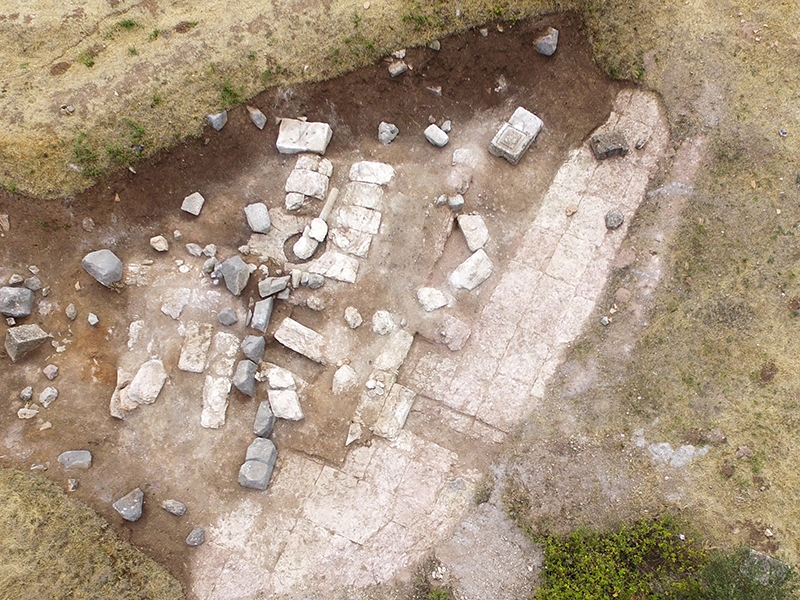
The 2016 campaign of the Onchestos Excavation Project was conducted from June 6 to July 16. At Site A, the team opened 16 new trenches, focusing on the annex and the area of the temple to the east of the annex. A suspicion expressed during the 2015 season was confirmed archaeologically: The annex had a second entrance along its eastern wall. In the area of the temple, parts of the east and north sides of the stereobate were uncovered with extreme care. The material used for its construction was identified as the soft white limestone associated with the late Classical and Hellenistic phases of the sanctuary. The small structure on top of the stereobate, which combines architectural elements of the temple and the Archaic stoa, seems to be later. In the middle of this small structure, a well, probably dating to Late Antiquity, was found (already mentioned in the reports on the rescue excavation of 1972).
At Site B, the team opened 11 new trenches and returned briefly to 6 trenches that were previously explored in 2015. The main focus of the campaign was the circular structure. In one of the newly opened trenches, two fragmentarily preserved Ionic corner capitals were found. They were made of soft white limestone and covered with plaster of excellent quality. In the same trench, the lower section of a large Ionic column was brought to light. The column is situated approximately 2 meters outside the circular structure. In addition, the first of the five small rooms (oikoi) to the north of the large rectangular building was excavated. The existence of these rooms has been known since 2014 thanks to the results of the geophysical survey. Towards the end of the season, a significant number of pottery fragments (primarily storage vessels) was found within the room.


Both sites continued to reveal striking quantities of metal objects including weapons, athletic utensils, and coins, the latter in a remarkably good state of preservation. Among the numismatic finds unearthed during the 2016 season, we mention a bronze coin – discovered at Site A – associated with Alexander the Great based on its iconography and inscription. At Site B, the team found an impressive number of terracotta architectural elements (the majority belong to a sima), many of which bear traces of painted decoration in white, black, and red. The antefixes – one of which is very well preserved – are also decorated in relief. Especially at Site A, the team kept unearthing pottery fragments with graffiti scratched on their surfaces.
